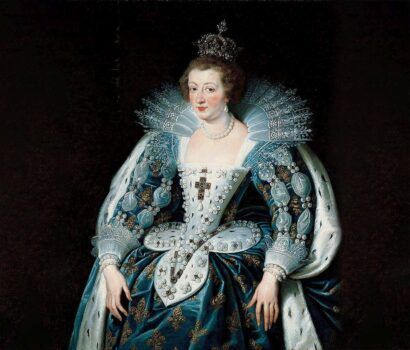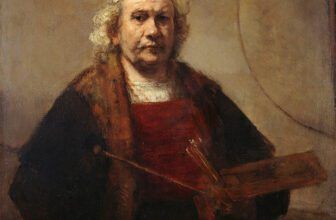What are Peter Paul Rubens’ Most Famous Paintings
| Invest in Hidden Masterpiece: Rare Antique Oil Paintings For Sale. Limited Originals Available 💰😊 Are you looking for authentic hidden masterpiece? Explore old master antique oil paintings from the Renaissance and Baroque eras. From 16th-century portraits to 18th-century landscapes. Authenticity guaranteed, Old Master antique oil paintings for sale. Shop Now! 🎨 Renaissance And Baroque Art Landscape Antique Paintings Old Master Portrait Paintings |
Few names in Western art history command the same reverence and awe as Peter Paul Rubens. A towering figure of the Baroque era, Rubens wasn’t merely a painter; he was a storyteller, diplomat, scholar, and entrepreneur. His art, characterized by dramatic intensity, rich color, and voluptuous figures, bridged the divide between Renaissance idealism and Baroque theatricality. His prolific output, brilliant technique, and unparalleled influence have earned him a permanent place among the pantheon of the great masters.
This is the story of Rubens’ life, his most famous paintings, the secrets behind his masterpieces, where his works are now housed, and the legacy he left behind.
The Story of Peter Paul Rubens
Born on June 28, 1577, in Siegen, Westphalia (now Germany), Peter Paul Rubens came into the world during a time of religious and political upheaval. His father, Jan Rubens, was a Protestant and had fled Antwerp to avoid persecution. After his father’s death in 1587, young Rubens and his mother returned to Antwerp, where he was raised as a devout Catholic—an influence that would later resonate throughout his deeply spiritual works.
Rubens received a classical education and was fluent in several languages, including Latin, French, Dutch, and Italian. These scholarly foundations were unusual for a painter of his time and would shape his art with layers of symbolism, historical references, and theological sophistication.
In 1600, Rubens traveled to Italy, where he immersed himself in the works of Titian, Michelangelo, Raphael, and Caravaggio. The Italian Renaissance deeply inspired him, particularly the sensuality and drama found in Venetian painting. During his eight-year stay in Italy and Spain, he also served as a court painter to the Duke of Mantua, sharpening his diplomatic and artistic skills.
By the time Rubens returned to Antwerp in 1608, he had already forged a distinctive style and reputation. He quickly rose to prominence, becoming court painter to the rulers of the Spanish Netherlands and securing commissions from aristocrats, monarchs, and the Catholic Church. Rubens married Isabella Brant in 1609, and their relationship is beautifully depicted in several of his portraits.
As an artist-diplomat, Rubens navigated political tensions in Europe, traveling to England, Spain, and France to negotiate peace treaties, all while continuing his artistic work. After Isabella’s death, Rubens remarried Hélène Fourment, a much younger woman who became a muse and subject in many of his later paintings.
Rubens died on May 30, 1640, at age 62, leaving behind a staggering legacy of over 1,400 works.
What is Peter Paul Rubens Known For?
Rubens is best known for:
-
Baroque Dynamism: His paintings are full of motion, energy, and emotional intensity, often with dramatic lighting and theatrical compositions.
-
Mythological and Religious Subjects: He reimagined biblical tales and ancient myths with human passion and grandeur.
-
Voluptuous Figures: Rubens’ ideal of beauty was robust and curvaceous, giving rise to the term “Rubenesque.”
-
Allegorical Art: Rubens’ work often carried political, religious, or moral allegories, reflecting his classical education and diplomatic engagement.
-
Workshop Production: Rubens ran a large workshop in Antwerp where assistants helped him produce massive altarpieces, portraits, and decorative cycles.
Peter Paul Rubens’ Most Famous Paintings
1. The Elevation of the Cross (1610–1611)
Commissioned for the Cathedral of Our Lady in Antwerp, this monumental triptych embodies the Baroque ideal: intense emotion, dynamic composition, and a play of light and shadow. The central panel, showing Christ being raised on the cross, captures the muscular tension of human bodies and divine sacrifice.
2. The Descent from the Cross (1612–1614)
Another masterpiece from the Cathedral of Our Lady, this work shows Christ’s lifeless body being taken down. The mournful yet graceful figures, and the masterful composition, highlight Rubens’ ability to blend sorrow and divinity in one frame.
3. The Garden of Love (c. 1633)
A celebration of marriage and sensuality, this allegorical work is believed to reflect Rubens’ own happiness with his second wife, Hélène. It’s a joyous explosion of color, movement, and erotic symbolism.
4. The Massacre of the Innocents (c. 1611–1612)
One of Rubens’ most emotionally intense and violent works, it depicts the biblical infanticide in chilling detail. The anguish of the mothers and the brutality of the soldiers are conveyed with powerful realism.
5. The Judgment of Paris (c. 1636)
Based on Greek mythology, this painting shows Paris choosing between the goddesses Hera, Athena, and Aphrodite. It showcases Rubens’ mastery in painting the nude human form and his love for classical themes.
6. Marie de’ Medici Cycle (1622–1625)
This monumental series of 24 paintings was commissioned by Queen Marie de’ Medici of France to decorate the Luxembourg Palace. It’s one of Rubens’ grandest projects, blending historical narrative with mythological allegory.
7. The Three Graces (1635)
Depicting the classical goddesses of charm, beauty, and joy, this painting is a testament to Rubens’ celebration of the human form and sensuality.
What is the Most Expensive Painting by Peter Paul Rubens?
Rubens’ “The Massacre of the Innocents” fetched an astonishing £49.5 million (around $76 million USD) at a Sotheby’s auction in 2002, making it the most expensive Rubens painting ever sold and, at that time, one of the most expensive Old Master paintings in history.
Previously believed to be by a lesser-known artist, it was correctly attributed to Rubens shortly before its sale. The dramatic content and dynamic execution contributed to its high valuation.
How Many Paintings Did Peter Paul Rubens Create?
Rubens is estimated to have created over 1,400 works, though some sources cite even higher numbers when counting workshop pieces. His Antwerp workshop was highly organized and productive. Assistants—most famously Anthony van Dyck—would work under Rubens’ direction, and he often added final touches or painted key elements like faces and hands himself.
His works span:
-
Religious altarpieces
-
Mythological and allegorical paintings
-
Portraits
-
Landscapes
-
Tapestry designs
-
Ceiling and architectural decorations
This prolific output makes Rubens one of the most productive artists in European art history.
Where Are Rubens’ Paintings Located Today?
Rubens’ masterpieces are housed in some of the most prestigious museums and collections across the world. Notable locations include:
Belgium
-
Royal Museum of Fine Arts, Antwerp: Home to some of his finest religious works.
-
Cathedral of Our Lady, Antwerp: Houses The Elevation of the Cross and The Descent from the Cross.
France
-
Louvre Museum, Paris: Holds a large collection including the Marie de’ Medici Cycle.
United Kingdom
-
National Gallery, London: Features works like Samson and Delilah and Peace and War.
-
Wallace Collection, London: Contains numerous Rubens paintings and drawings.
Spain
-
Museo del Prado, Madrid: One of the richest Rubens collections, with over 90 works.
USA
-
Metropolitan Museum of Art, New York: Contains The Holy Family with Saints Francis and Anne among others.
-
J. Paul Getty Museum, Los Angeles: Showcases some of his landscape works.
Germany
-
Alte Pinakothek, Munich: Features over 70 paintings by Rubens.
Austria
-
Kunsthistorisches Museum, Vienna: One of the premier collections of Rubens.
Peter Paul Rubens’ Legacy
Rubens’ legacy is profound and far-reaching:
1. Shaping the Baroque Aesthetic
His art defined the visual style of the 17th century, especially in Flanders and across Catholic Europe. The Baroque, as Rubens saw it, was about grandeur, emotion, and persuasion—often employed to bolster the Counter-Reformation.
2. Training the Next Generation
Rubens mentored many artists, most notably Anthony van Dyck, who became a court painter in England. His workshop trained painters in both artistic technique and business practices, acting as a kind of Renaissance startup.
3. Art as Political Power
Rubens used painting as a diplomatic tool, often embedding political allegory in his work. He was knighted by both Philip IV of Spain and Charles I of England for his efforts in diplomacy.
4. Influencing Future Movements
Rubens inspired generations of artists, from Eugène Delacroix to Édouard Manet and even Pablo Picasso. His sense of movement and expression had a lasting impact on Romanticism and later modern art.
5. Cultural Icon
Today, Rubens is more than an artist—he’s a cultural archetype. The term “Rubenesque” remains part of modern vocabulary, symbolizing a celebration of full-bodied, natural beauty.
A Life Larger Than Canvas
Peter Paul Rubens lived a life as vivid and dynamic as his paintings. His mastery of color, form, and narrative remains unrivaled. Whether creating sacred altarpieces, mythological fantasies, or royal commissions, Rubens imbued each work with power, sensuality, and movement.
More than 380 years after his death, Rubens continues to awe and inspire. He wasn’t merely a painter of flesh and fabric—he was a chronicler of human emotion, divine grace, and worldly grandeur. His legacy is not just found in the halls of museums but in the enduring visual language of Western art.




